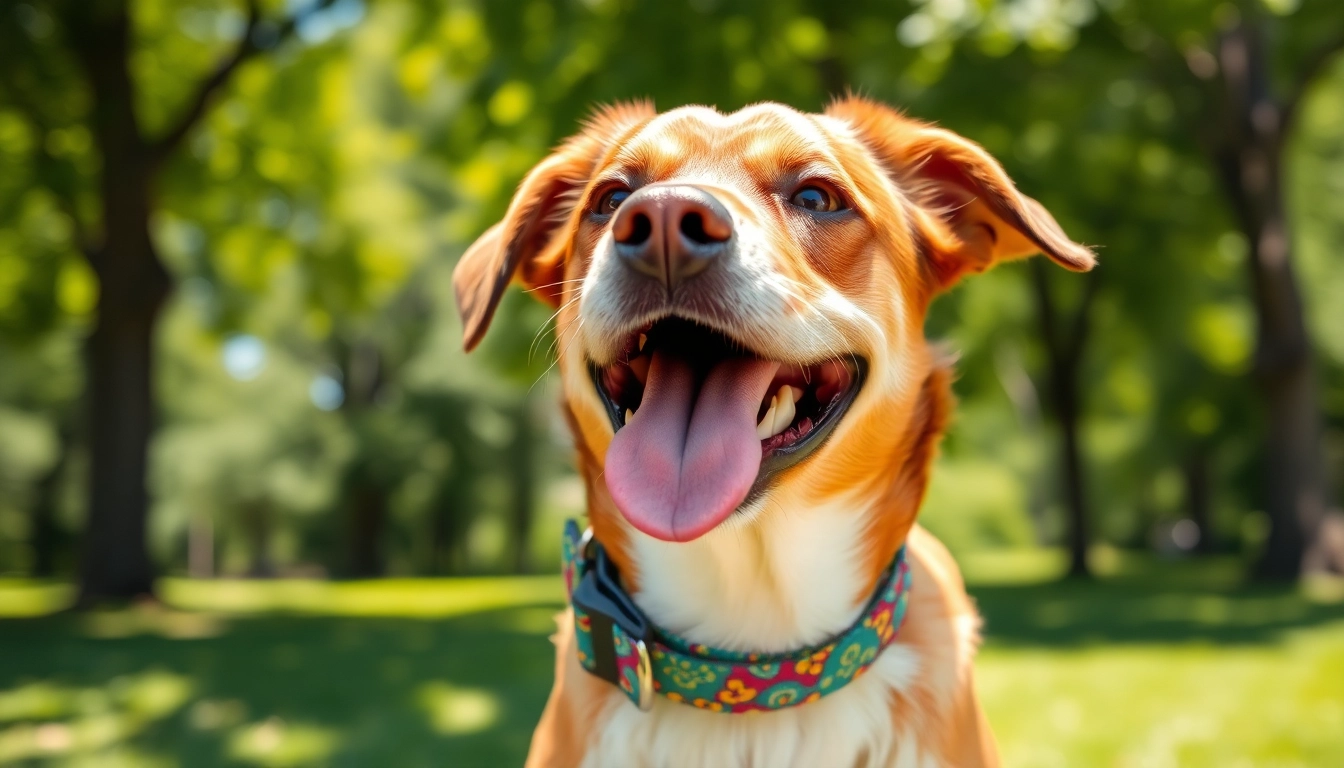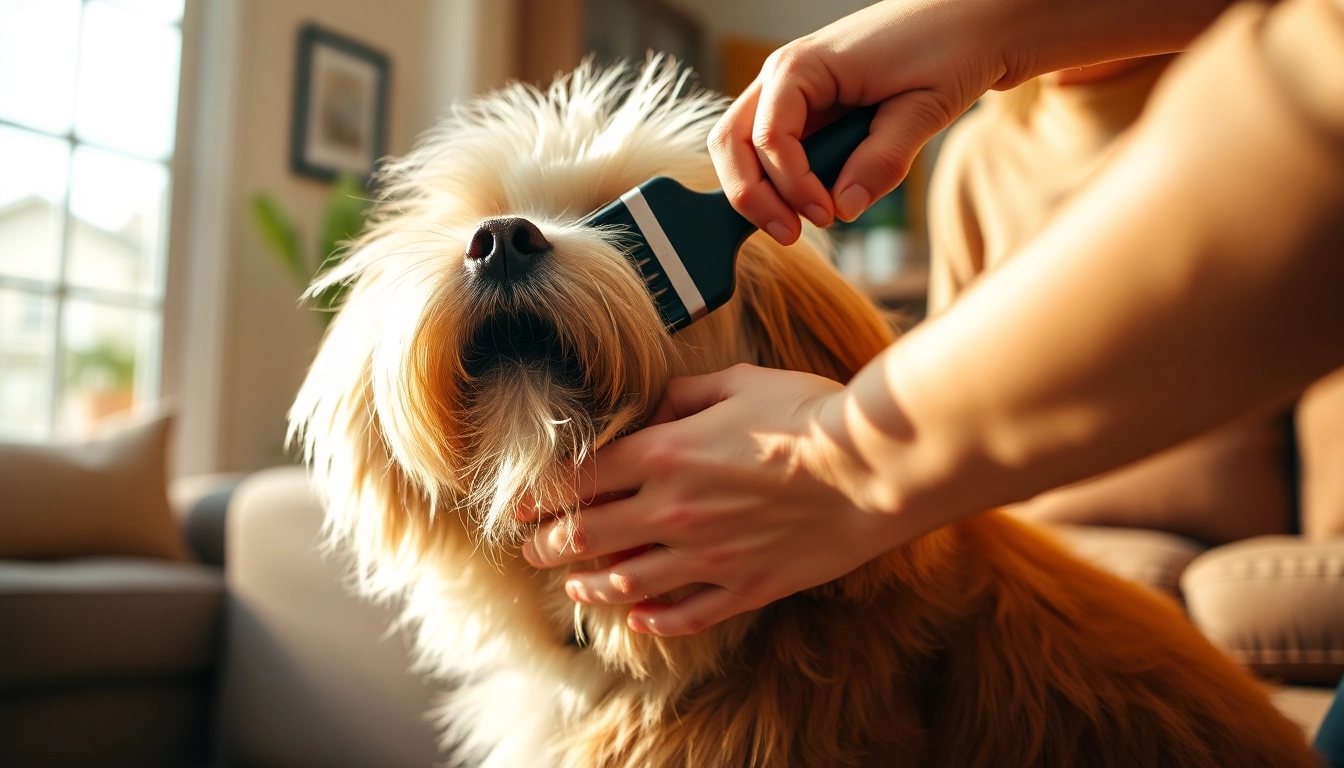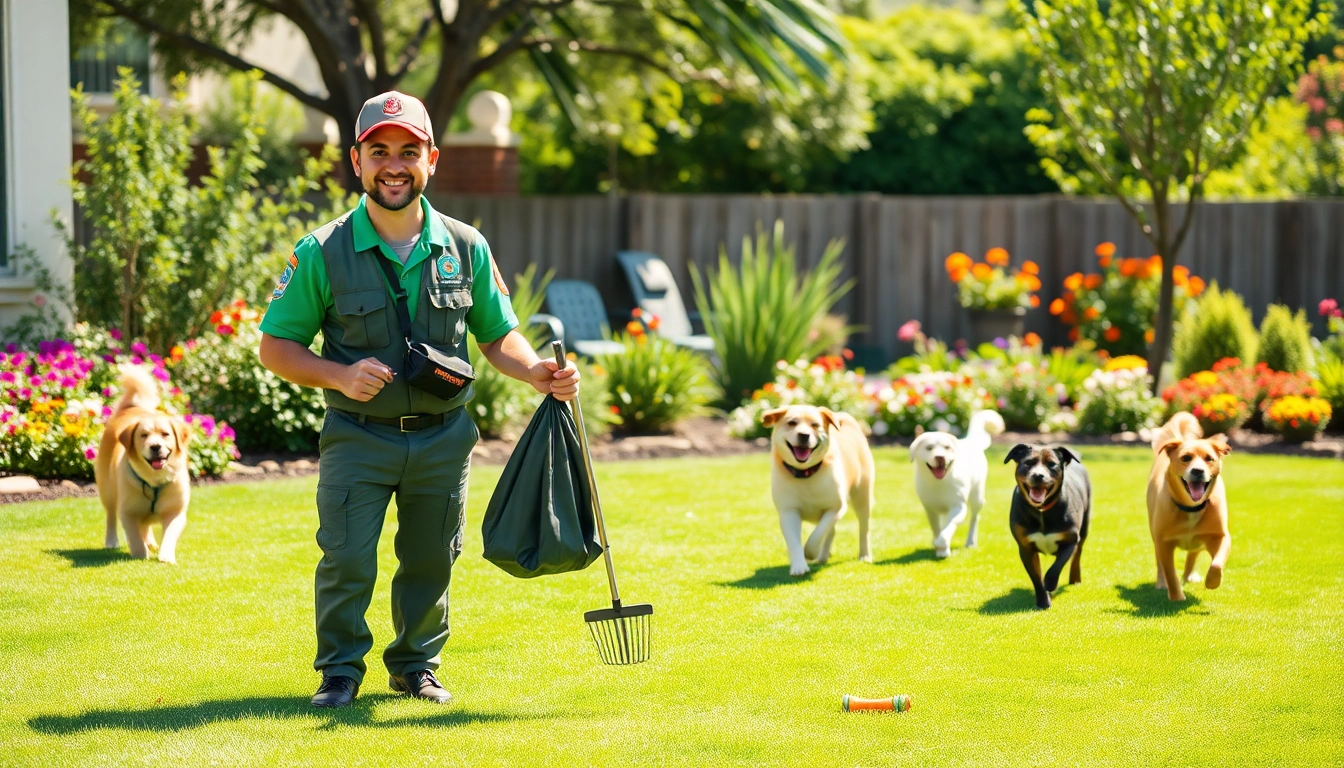Understanding Dog Collars: Types and Uses
When it comes to dog ownership, selecting the right dog collars for dogs is imperative. Dog collars are not just functional; they play a significant role in your pet’s safety, comfort, and style. Various types of collars serve distinct purposes, from basic identification to specialized training tools. Understanding these types will help ensure you choose the right collar that matches both your dog’s needs and your lifestyle.
Essential Types of Dog Collars
There are several essential types of dog collars, each designed for specific situations and functionalities. Here’s a closer look at the most common types:
- Flat Collars: The most common type used for everyday wear, flat collars are adjustable and often come with a D-ring for leash attachment. Great for identification tags, these collars are ideal for well-behaved dogs that do not pull.
- Martingale Collars: Designed with a tightening mechanism that allows for more control without choking, collar models are especially useful for dogs with slim necks or those who tend to slip out of their collars.
- Head Halters: Often used for training, head halters prevent pulling by controlling the dog’s head. They are particularly beneficial for large, strong dogs and can discourage undesirable behaviors effectively.
- Prong and Choke Collars: These are more controversial as they apply pressure on the dog’s neck. Used predominantly for training aggressive pullers, they require a skilled handler to prevent misuse and discomfort.
- GPS Collars: Technology has introduced GPS collars that track your dog’s location. Ideal for adventurous pets that might wander, these collars can provide peace of mind for pet owners.
- Reflective Collars: If you take evening walks, reflective collars enhance visibility, keeping your dog safer in low-light conditions.
Choosing the Right Collar for Your Dog
Selecting the appropriate collar for your dog requires consideration of several factors, including size, breed, behavior, and specific needs. Here are some tips:
- Size and Fit: Ensure that the collar is appropriately sized. You should be able to fit two fingers between the collar and your dog’s neck.
- Breed Considerations: Certain breeds may benefit from specialized collars, like martingale collars for hounds or head halters for larger breeds.
- Activity Level: For active dogs that tend to pull, a harness or a sturdy martingale collar may be more suitable to ensure comfort and security.
- Purpose: Consider how you plan to use the collar. Is it primarily for identification, training, or style? Align your choice with its intended purpose.
Common Mistakes to Avoid When Selecting a Collar
While choosing a collar, many pet owners make some common errors that can lead to discomfort or safety issues. Here are mistakes to avoid:
- Purchasing the Wrong Size: A collar that is too tight can choke your dog, while one that’s too loose can slip off easily.
- Ignoring Material: Different materials affect comfort and durability. Always consider both factors when selecting a collar.
- Overlooking Safety Features: Ensure collars have breakaway features if your dog is prone to getting caught on objects.
- Basing Selection on Trends Alone: While aesthetics matter, the collar’s functionality and how well it suits your dog’s needs should be the priority.
Styling Your Dog: Fashion Meets Function
Dog collars aren’t just practical they are also fashion statements that reflect your dog’s personality and your personal style. With the variety of designs available, pet owners have the unique opportunity to blend functionality with fashion seamlessly.
Popular Dog Collar Styles
In the world of pet fashion, collars come in countless styles to appeal to different aesthetics. Here are some popular styles:
- Classic Leather Collars: Timeless and durable, leather collars add a touch of elegance to your dog’s look.
- Colorful Nylon Collars: Available in an array of colors and patterns, these are lightweight and easy to clean. Perfect for vibrant personalities!
- Designer Collars: For those who appreciate luxury, designer collars offer unique designs, often made from premium materials.
- Padded Collars: For added comfort, padded collars are great for dogs that have sensitive skin or for long walks.
- Seasonal Collars: From festive patterns for holidays to patterns based on the season, these collars can add a festive flair to your dog’s wardrobe.
Matching Collars with Your Dog’s Personality
Your dog has a unique personality, and choosing a collar that reflects that can be enjoyable. Here’s how to match a collar with your dog’s persona:
- Calm and Serene: Soft colors or classic leather collars can communicate a gentle demeanor.
- Playful and Energetic: Bright colors and fun patterns may reflect a lively spirit.
- Adventurous: Consider durable collars with outdoor motifs for the explorer at heart.
- Elegant and Sophisticated: Opt for sleek materials and subdued colors, conveying a sense of style and grace.
Seasonal Trends in Dog Accessories
Understanding seasonal trends can help you select collars that resonate with current fashions. Here are some trends to keep an eye on:
- Spring: Floral designs and pastel colors are popular as the weather warms up.
- Summer: Bright colors and beach-themed collars emerge for outdoor adventures.
- Autumn: Earthy tones and plaid patterns signal the start of the cozy season.
- Winter: Darker colors and reflective materials become popular as the days grow shorter.
Dog Collar Materials: What You Need to Know
The material of your dog’s collar plays a crucial role in both comfort and durability. Here’s an in-depth look at the most common materials used for dog collars.
Pros and Cons of Different Collar Materials
Different materials come with their own set of advantages and disadvantages:
- Nylon: Pros: Durable, lightweight, and easy to clean. Cons: Can wear down over time and may not be as comfortable for sensitive skin.
- Leather: Pros: Extremely durable and can last for years. Cons: Requires regular maintenance and care to prevent drying and cracking.
- Neoprene: Pros: Soft and padded, ideal for comfort; water-resistant. Cons: May not be as durable and can wear out quickly with rough use.
- Fabric: Pros: Can be customized with various patterns; often soft. Cons: May absorb odors and be harder to clean.
How Material Affects Comfort and Durability
The choice of material affects not just the collar’s look but also its comfort and longevity. With sensitive breeds, softer materials are usually recommended to prevent chafing. Conversely, stronger materials like leather or reinforced nylon are ideal for powerful dogs that might exert substantial force on their collars.
Eco-Friendly Options for Conscious Pet Owners
In an era of increased environmental awareness, many pet owners are looking for eco-friendly collar options. Brands now offer collars made from recycled materials, organic cotton, or bamboo webbing. These collars are a sustainable choice for environmentally conscious pet owners who want to minimize their pet’s carbon paw-print.
Care and Maintenance of Dog Collars
Proper care and maintenance of your dog’s collar are essential for prolonging its life and ensuring your dog’s safety. With a bit of effort, you can keep the collar looking great and functioning well for years.
Cleaning Tips for Different Collar Materials
Each material requires its own cleaning method:
- Nylon: Can be washed with mild soap and warm water. Air dry thoroughly.
- Leather: Use a damp cloth for light cleaning, and apply leather conditioner periodically to keep it supple.
- Neoprene: Should be cleaned with a pet-safe soap and rinse well with water to remove any residues.
- Fabric: Machine-washable fabric collars should be placed in a laundry bag to avoid snagging.
Signs That It’s Time for a New Collar
Regularly assessing your dog’s collar is essential. Here are some indicators that it may be time for a replacement:
- Visible wear, such as fraying or cracking.
- A change in fit – if the collar feels too loose or too tight after adjusting.
- Persistent odors that cannot be cleaned out.
- Moderate damage to securing elements, such as clasps, that can present safety risks.
Storing and Maintaining Collars to Extend Lifespan
When not in use, collars should be stored away from sunlight and moisture, preferably in a dedicated space for pet accessories. By keeping collars clean and dry, you can extend their life and maintain overall hygiene.
The Importance of Proper Fit and Safety
Ensuring your dog’s collar fits correctly is not just about comfort but also about safety. A well-fitted collar can prevent irritation or accidents while going for walks.
Measuring Your Dog for a Perfect Fit
To measure your dog for the optimal collar fit, follow these steps:
- Use a flexible measuring tape or string around your dog’s neck.
- Leave two fingers’ width underneath to ensure comfort and adjustability.
- Consult size guides provided by manufacturers, as sizes can vary.
Understanding Safety Features in Dog Collars
Many collars come equipped with safety features, such as quick-release mechanisms or reflective materials for visibility at night. Investing in collars that prioritize safety ensures that your dog is less likely to escape or suffer injuries.
Using Collars for Training: Benefits and Risks
While collars can be effective training tools, they must be used correctly. Using the right type of collar for training can facilitate obedience, but improper use can lead to harm or exacerbate bad behavior. Always consult with a professional trainer or veterinarian when considering training collars.



